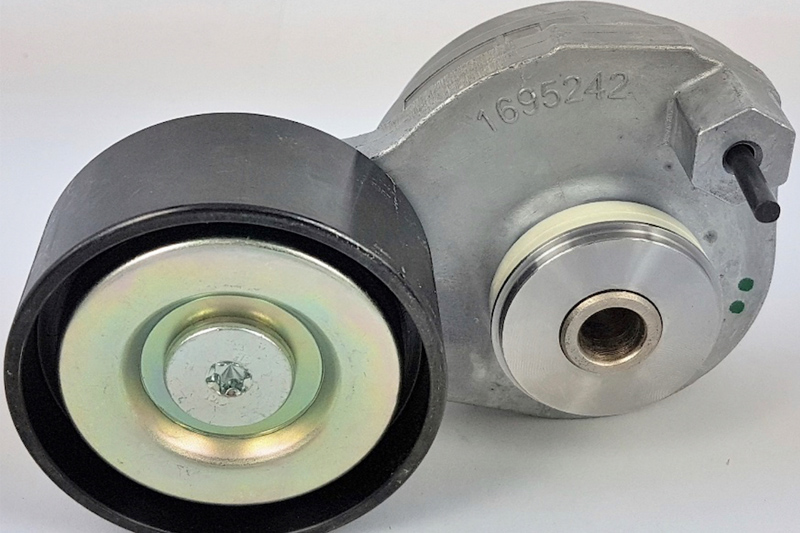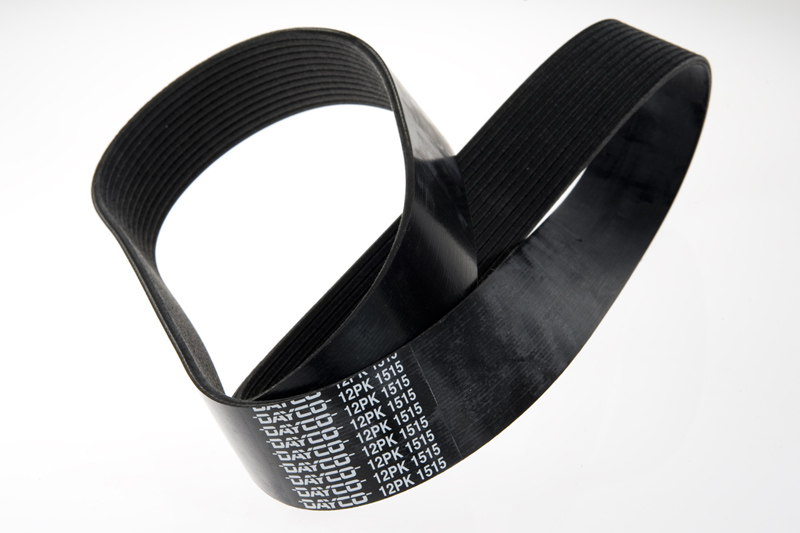
Dayco talks through the intricacies of the humble tensioner, and explains how the ‘check & change’ approach to tensioner maintenance can be an excellent, cost-saving solution for both fleet and independent workshops.
The auxiliary system is crucial to the overall reliability of a vehicle, driving not just the alternator, but the water pump, steering pump, air conditioning compressor and the like. Alongside the Poly-V belt, which, with its large contact area is capable of driving these ancillary components, the performance of the tensioner is a vital factor in the drive system.
Although there are several application- specific types of tensioner, the tensioner’s body/spring case, arm offset and length, and pulley size are all designed to ensure the optimum performance of the drive system. This means that the tensioner is vital to the vehicle’s reliable operation. However, despite its obvious importance, the component can be overlooked during service and maintenance.
The most common tensioners consist of five main elements: the spring case and spring assembly, the pivot bush, the spring bush, the arm and the arm bush. Depending on the requirements of a given application, the spring wire used in the spring assembly can be either flat or round. Another element that is integral to the performance of the tensioner is the pivot bush, as both it and the spring bush ensure that the tensioner moves smoothly, while being appropriately damped. Also, in conjunction with the arm plate, the pivot bush ensures that the tensioner remains correctly aligned, which guarantees that the belt continues to operate under the designated tension when the engine is both under full load and at idle.

Due to the fact that the load is spread across the belt, Poly-V belts are comparatively thin and therefore have tremendous flexibility, which means they can also be used on small diameter pulleys, increasing the scope for VM engineers when seeking the ideal solution for the drive systems of new engine designs.
‘Check & change’
Should an auxiliary belt fail, be it due to wear or its incorrect tension, alongside the need to replace the affected parts, the vehicle’s time off the road must also be factored into the potential cost of ignoring the condition of the drive system. Recent figures revealed that, dependent on its cargo, a typical heavy-duty vehicle working on a daily national delivery contract could cost the owner up to £500 a day whilst it’s out of action. There is also the cost of roadside repair or recovery of the vehicle to take into consideration. However, applying Dayco’s ‘check & change’ principle to both belt and tensioner every time a vehicle enters the workshop only takes a moment, with the company claiming that it will mitigate these financial costs.
As heavy-duty vehicles generally have more than one belt system, this naturally also leads to business opportunities for workshops, and with 100,000 systems estimated to require maintenance annually, this equates to a sizeable opportunity for the independent.









